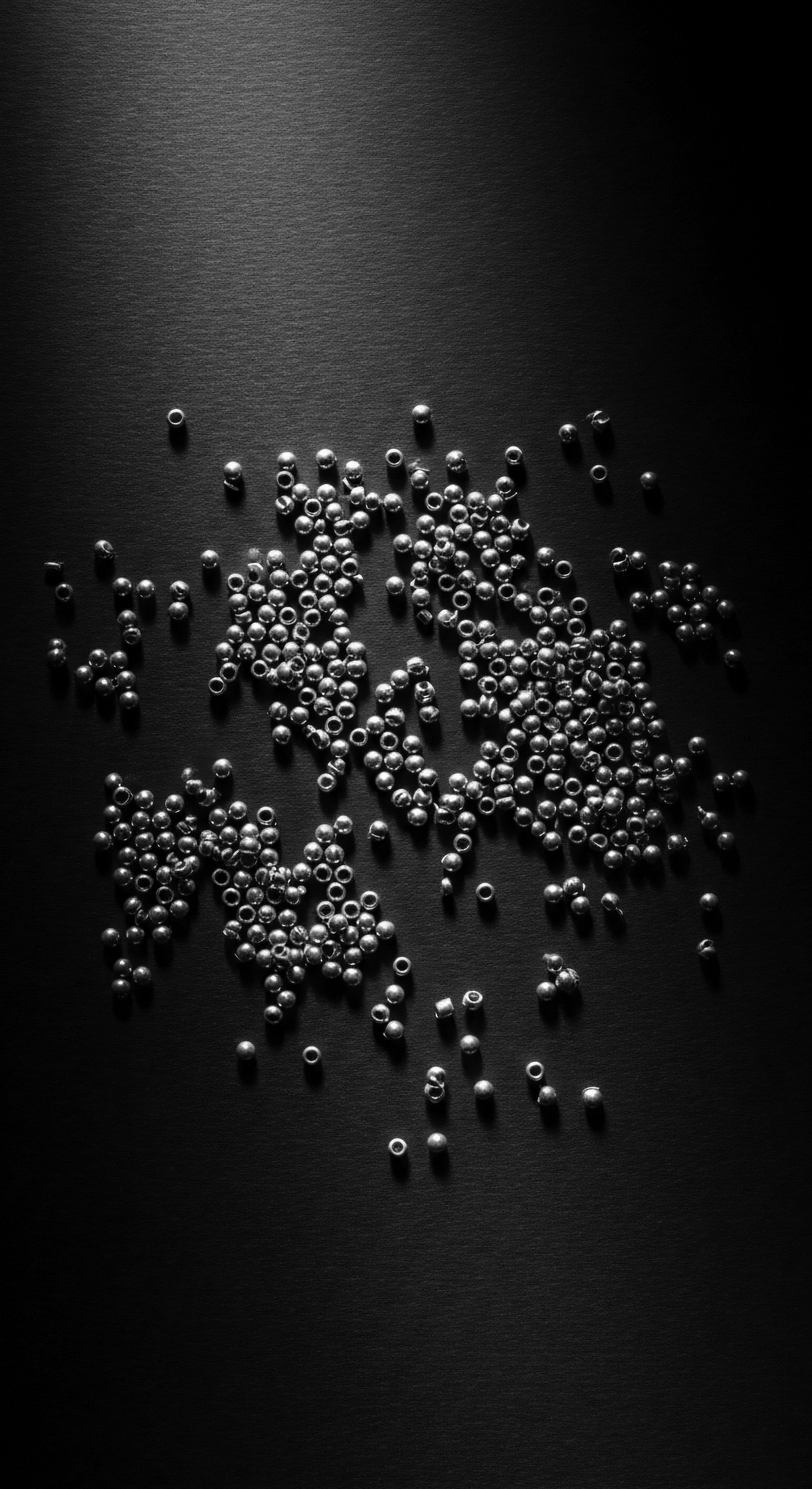
Roots
Have you ever held a single strand of your own hair, truly observed its magnificent coil, felt its resilience, and perhaps, listened to the silent stories it carries? For those of us with textured hair—the glorious spirals, tight coils, and flowing waves that defy simple categorization—our nighttime rituals are conversations with history, echoes of ancestral ingenuity. This journey into understanding why our hair calls for dedicated nighttime nurturing is a passage through time, a recognition of the wisdom passed down through generations. It begins with the very essence of the strand, a testament to its unique biology and a vibrant cultural heritage that has always known the secrets of preservation.
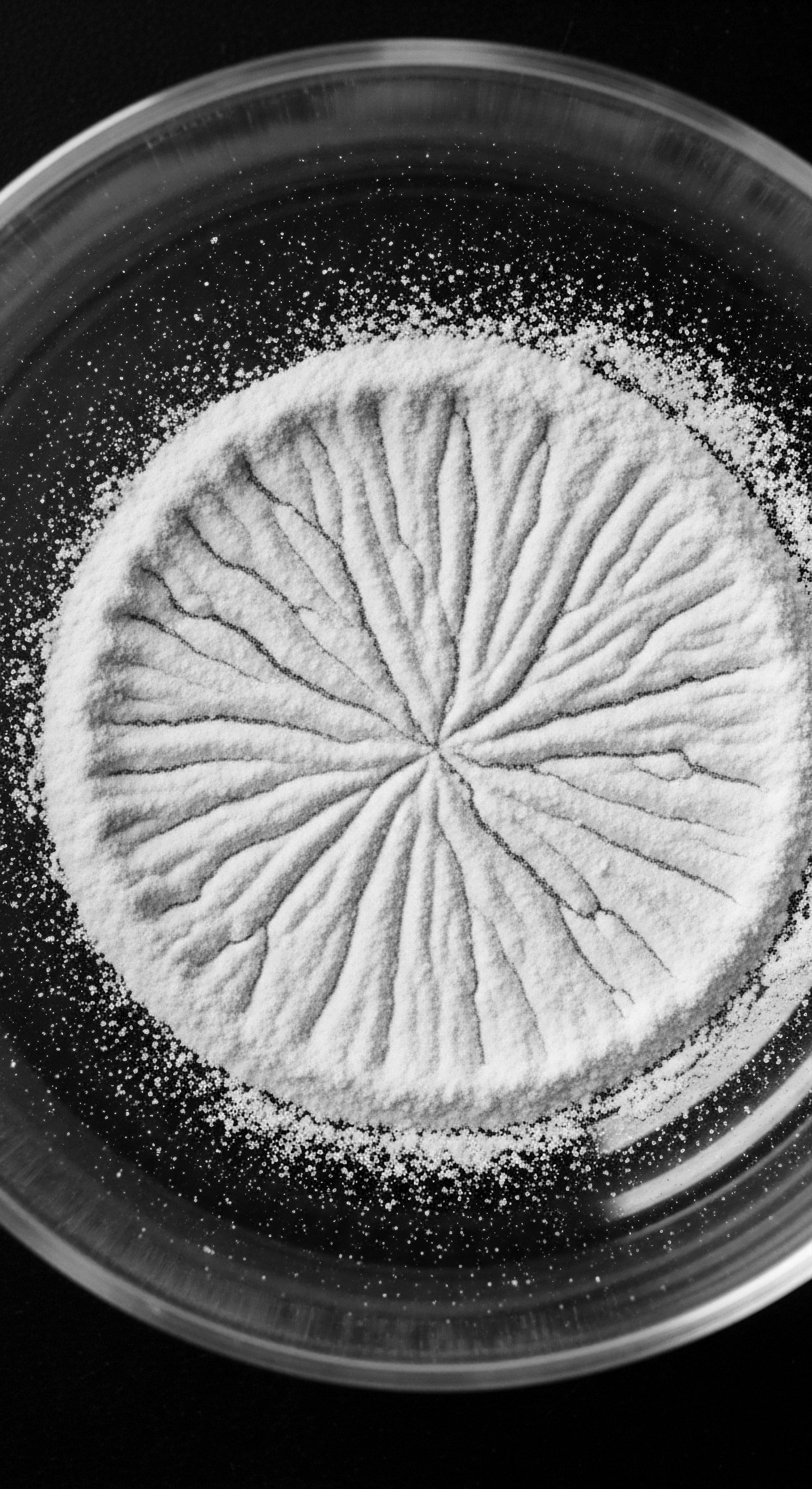
The Architecture of Ancestry
The very structure of textured hair calls for deliberate care, especially as dusk settles. Unlike hair with simpler, straighter forms, each strand of coily, kinky, or curly hair often possesses an elliptical or flat cross-section, rather than a perfectly round one. This distinctive shape contributes to its natural curl and its elevated cuticle scales. Think of the cuticle as a shingled roof, protecting the inner core of the hair.
On textured hair, these “shingles” do not always lie flat. They tend to be more open, more raised, creating more points of contact and, by extension, more opportunities for friction. As a result, the hair’s natural moisture, vital for its strength and elasticity, can more easily escape into the surrounding air. This elemental biological truth has, for centuries, guided the care practices of our forebears, who understood the hair’s tendency toward dryness.
Beyond shape, the distribution of sebum, the scalp’s natural oil, also plays a significant role. Sebum travels down the hair shaft with greater ease on straight strands. On coiled paths, the journey is longer, more arduous.
This means that the ends of textured hair often receive less natural lubrication, leaving them more vulnerable. This inherent dry disposition means that textured hair requires a constant, conscious replenishing of hydration, making the hours of rest, when the hair is most vulnerable to moisture loss and physical abrasion, a time of profound importance for its well-being.

How Did Ancestors Perceive Hair’s Elemental Needs?
Across the continent of Africa and throughout the diaspora, hair was never simply an adornment; it was a living map, a spiritual antenna, a repository of identity and lineage. Its condition reflected a person’s health, status, and connection to their community and ancestors. Knowing the hair’s propensity for dryness and fragility, ancestral cultures developed sophisticated care practices rooted in observation and deep connection to their environment.
They understood, without modern scientific terms, the biological needs of hair. They cultivated a wisdom passed down through the ages.
Consider the practices of the Himba women of Namibia, whose hair, often styled in intricate dreadlocks, is regularly coated with a mixture of ochre, butterfat, and aromatic resins. This traditional application serves not only as a vibrant aesthetic statement but also as a protective layer, shielding the hair from the harsh sun and preventing moisture loss. While perhaps not a direct nighttime ritual, it exemplifies a continuous, protective philosophy of hair care. Such historical practices, rooted in the understanding of environmental stressors and hair’s inherent nature, laid the groundwork for contemporary protective measures, including those used at night.
Textured hair’s unique structural geometry and natural oil distribution establish its inherent need for deliberate care, a truth recognized across generations.
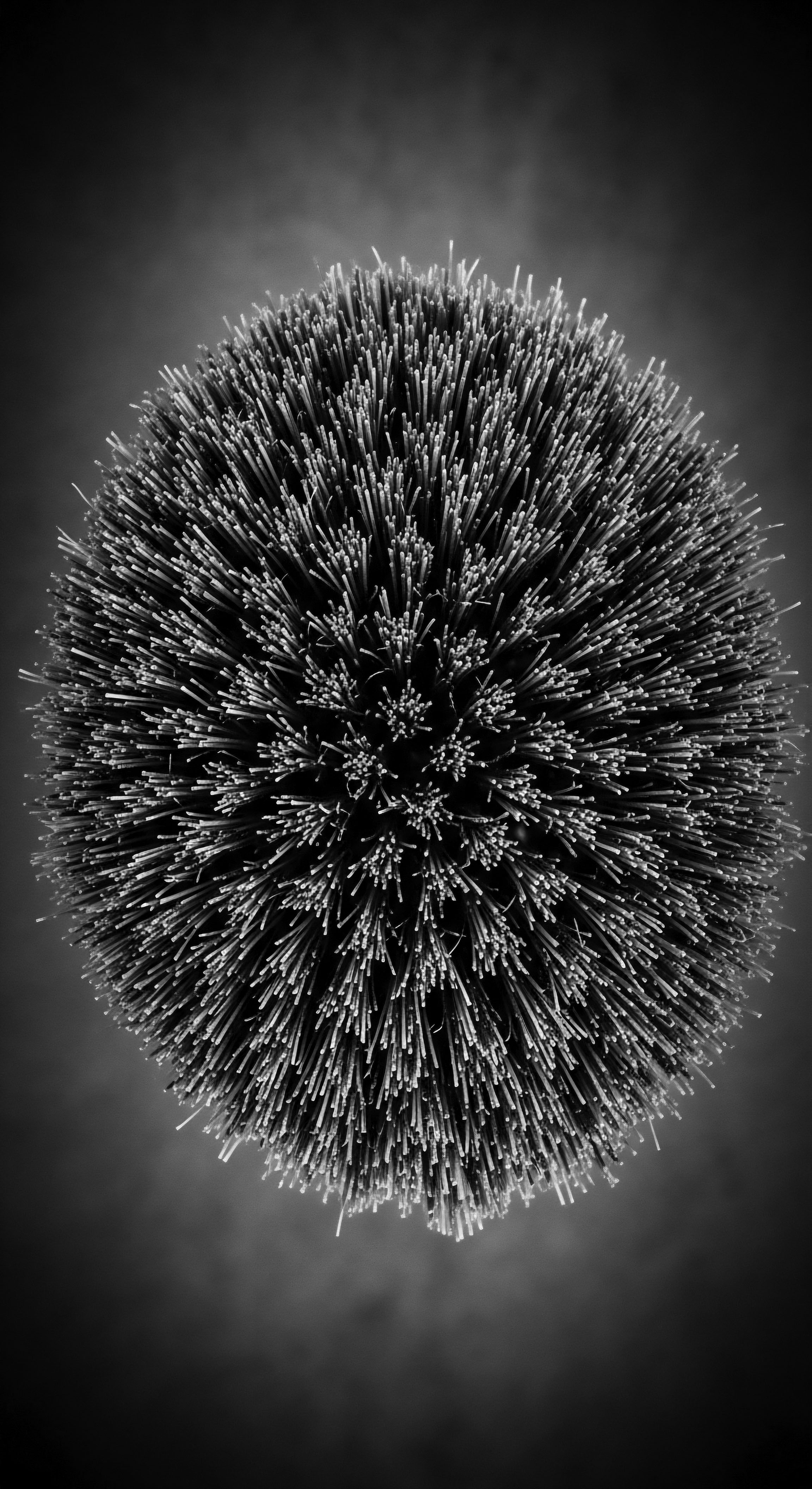
The Heritage of Hair Protection
The concept of covering hair for protection, particularly during periods of rest or inactivity, is deeply woven into the heritage of various African and diasporic communities. It stems from a practical understanding of minimizing friction and preserving moisture, lessons learned through generations of lived experience. Early forms of night coverings, whether simple cloths or intricately wrapped head ties, were direct responses to the hair’s delicate nature and its value. This practice predates modern science, yet its efficacy stands validated by contemporary understanding of hair physiology.
These coverings, often made from natural fibers available at the time, minimized the hair’s contact with rough sleeping surfaces, such as straw mats or coarse cotton. The preservation of hair was a reflection of self-respect and cultural continuity, particularly in contexts where hair was a primary marker of identity and lineage. The continuity of this practice through the transatlantic passage and beyond speaks volumes about its enduring significance.
| Hair Vulnerability Dryness |
| Ancestral Observation Hair feels parched, becomes brittle, breaks easily. |
| Traditional Response Application of natural butters and oils (e.g. shea, coconut). |
| Hair Vulnerability Friction Damage |
| Ancestral Observation Hair snags, tangles, experiences breakage. |
| Traditional Response Protective styling, covering hair with cloths. |
| Hair Vulnerability Environmental Stress |
| Ancestral Observation Sun, dust, and wind deplete hair vibrancy. |
| Traditional Response Headwraps, communal styling sessions. |
| Hair Vulnerability These traditional responses were adaptive and integral to the daily life and legacy of textured hair care. |
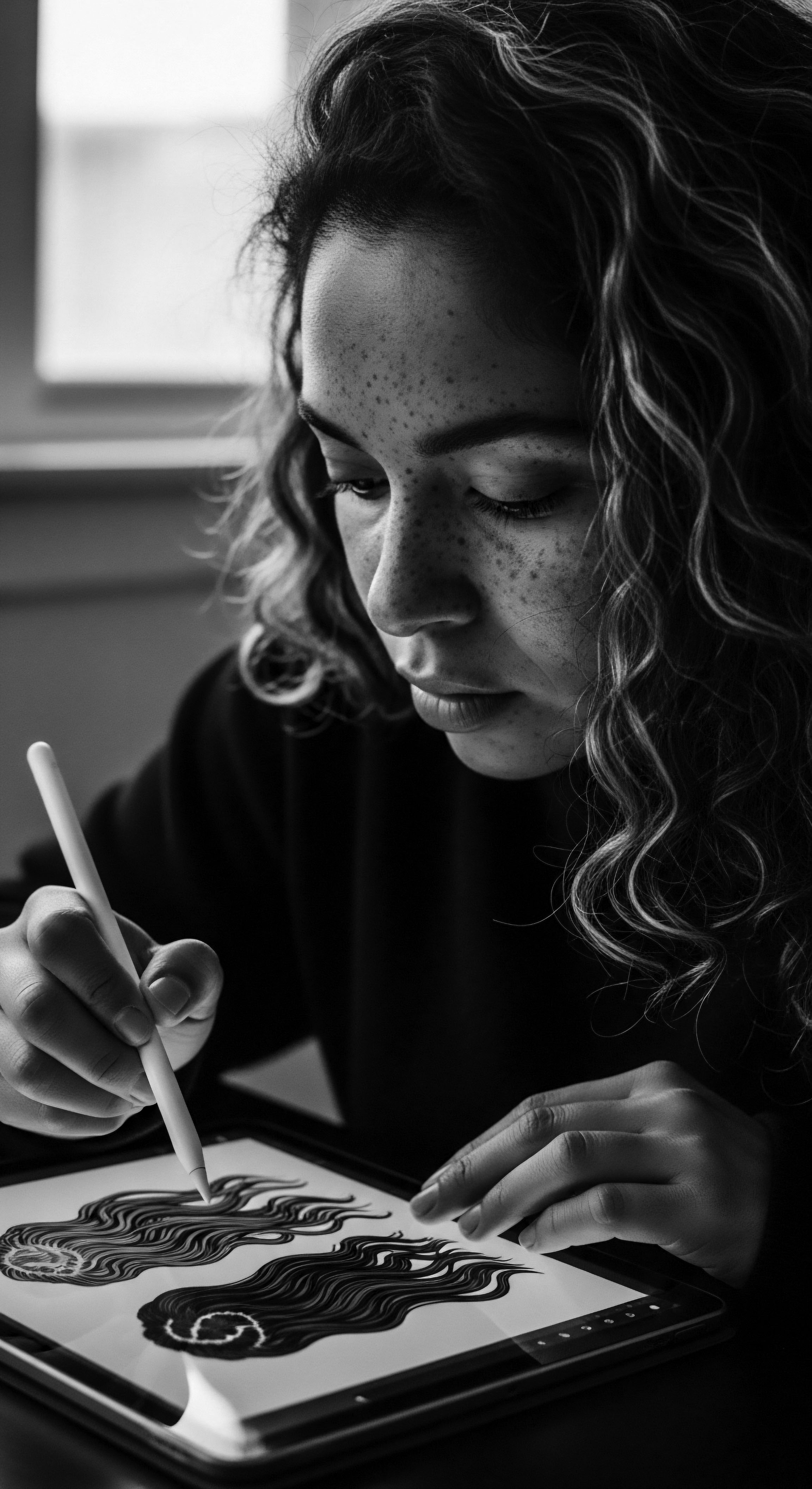
Ritual
The transition from day to night, for textured hair, is not merely a change in temporal rhythm; it is an invitation to engage in a ritual of preservation. This practice, steeped in history and informed by the unique needs of curls and coils, transforms mundane care into a meaningful act of self-reverence and cultural continuity. The night becomes a sacred chamber where hair is shielded, moisturized, and prepared for the coming day, minimizing the wear and tear that can compromise its strength and vibrancy.
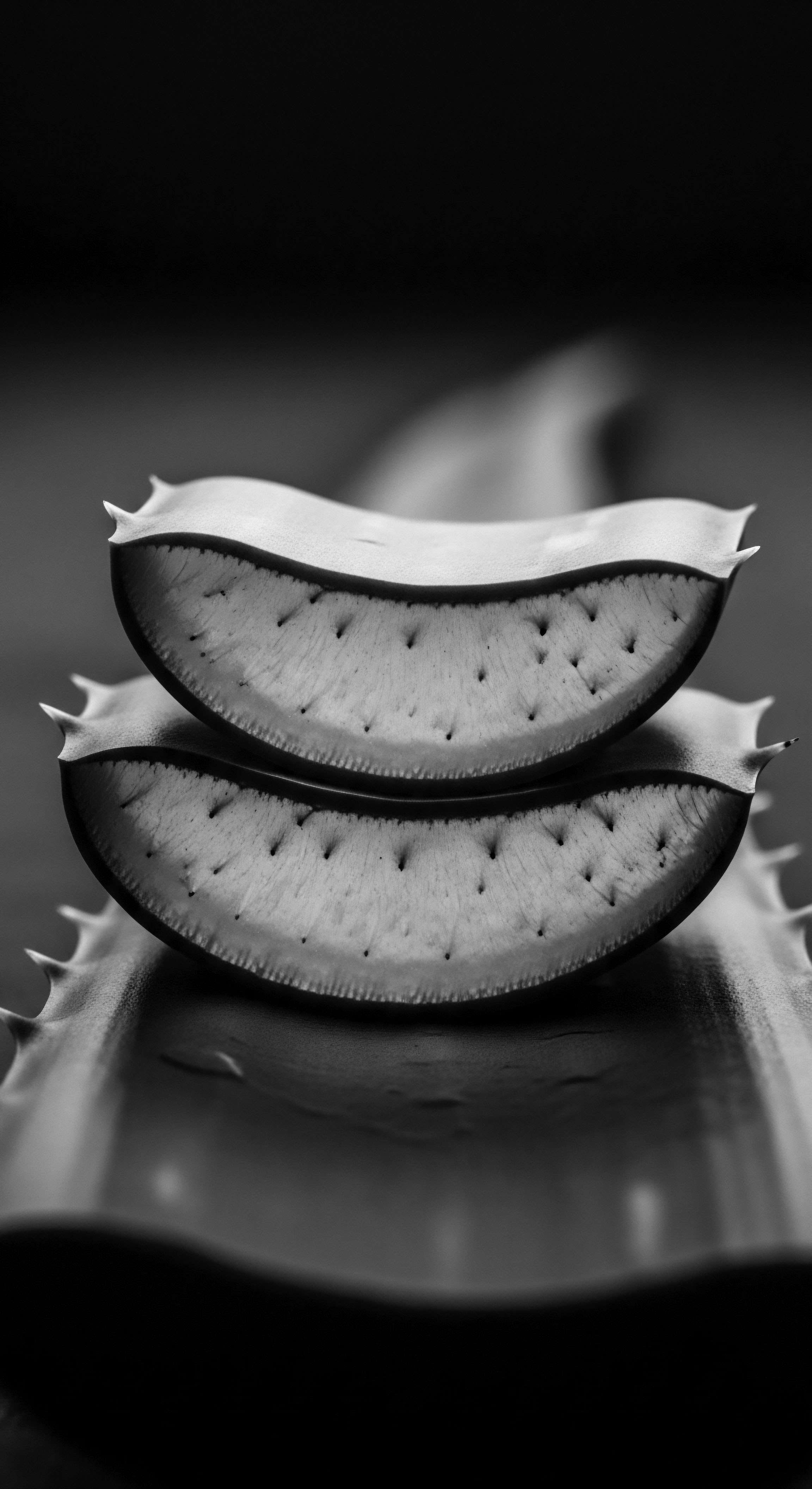
How Do Nighttime Practices Prevent Hair Loss and Breakage?
The hours spent in slumber are, paradoxically, some of the most challenging for textured hair. Our movements during sleep, the unconscious tossing and turning, create significant friction between the hair and sleeping surfaces. Cotton pillowcases, with their absorbent and sometimes abrasive fibers, act like tiny sponges, drawing essential moisture from the hair strands.
This moisture loss, coupled with the constant rubbing, can lead to lifted cuticles, tangles, and ultimately, breakage. This susceptibility is amplified in textured hair due to its already fragile structural characteristics.
The solution, echoed through generations and now validated by modern hair science, is to create a barrier. This barrier, whether a silk bonnet, a satin scarf, or a specialized pillowcase, allows the hair to glide rather than snag. Silk and satin, with their smooth surfaces, dramatically reduce friction, keeping the cuticle layer smooth and intact.
This simple act minimizes the physical stress on each strand, preventing the weakening and fracturing that can occur overnight. Moreover, these materials help to seal in any moisture applied during an evening regimen, ensuring that the hair remains hydrated and supple throughout the night.
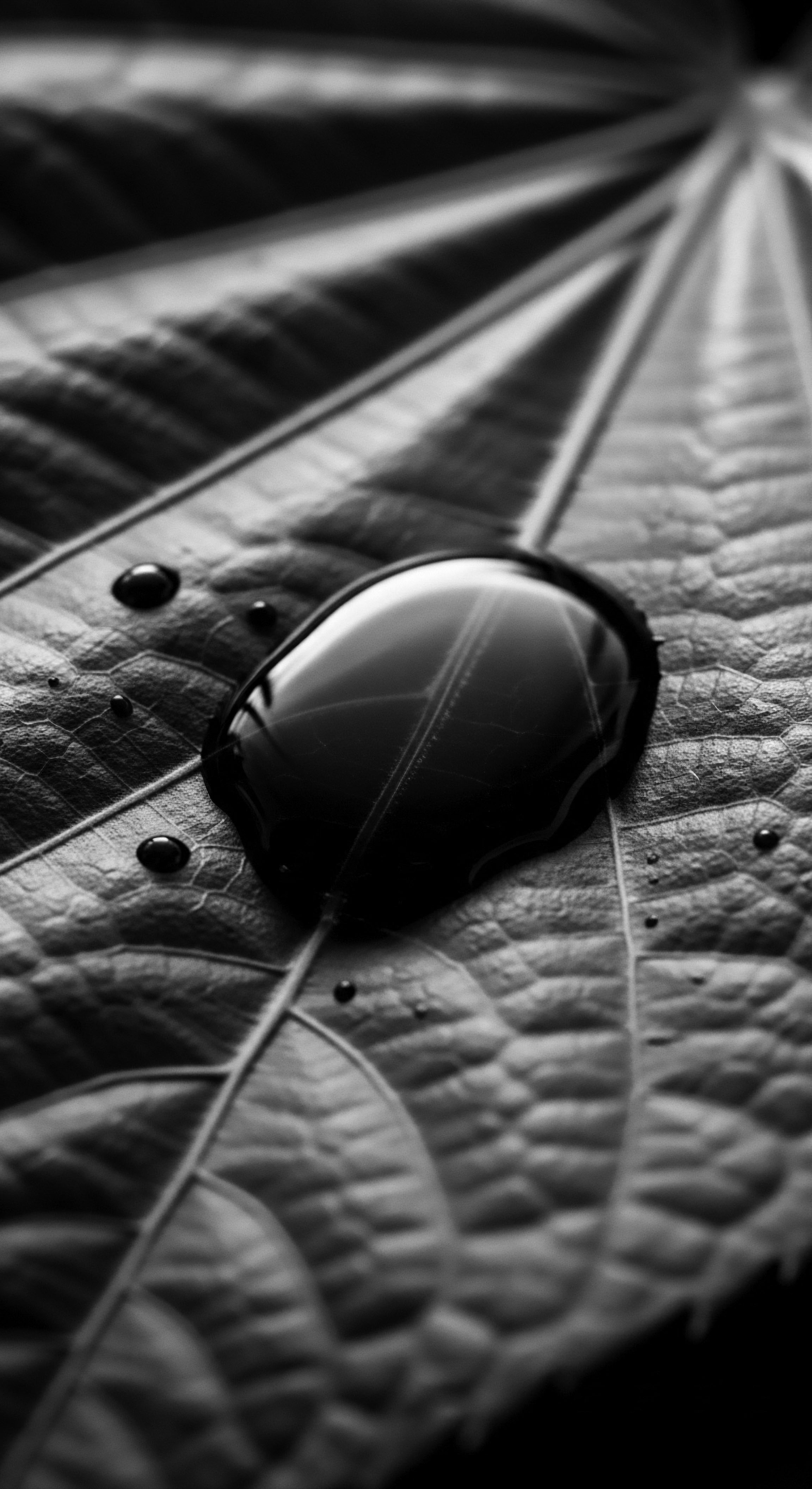
The Silent Language of Hair Coverings
The widespread adoption of head coverings for sleep within Black and mixed-race communities carries a historical weight that extends beyond simple hair protection. During periods of enslavement and subsequent racial discrimination, particularly in the Americas, headwraps and scarves became tools of resistance and identity. For instance, in 18th-century Louisiana, the Tignon Laws compelled Black women to cover their hair in public spaces, aiming to mark them as inferior. Yet, these women transformed the decree into a statement of defiance, tying elaborate, vibrant wraps that not only complied with the law but radiated resistance and style.
(Jelani Travel). This historical resilience underscores a deep, enduring connection to hair as a symbol of identity, and the night covering, in its quiet utility, became a part of this cultural narrative.
The practice of protecting hair at night, therefore, is not a recent innovation. It is a continuation of ancestral wisdom, a conscious effort to preserve not only the physical integrity of the hair but also its symbolic significance. The bonnet, the scarf, the durag—each carries a legacy, serving as a functional accessory while simultaneously acting as a reminder of collective strength and the beauty of continuity. They are protective shields against physical damage, and they are living artifacts of a rich cultural past.
Nighttime care for textured hair is a historical practice, using protective barriers like silk or satin to combat friction and moisture loss inherent to its unique structure.
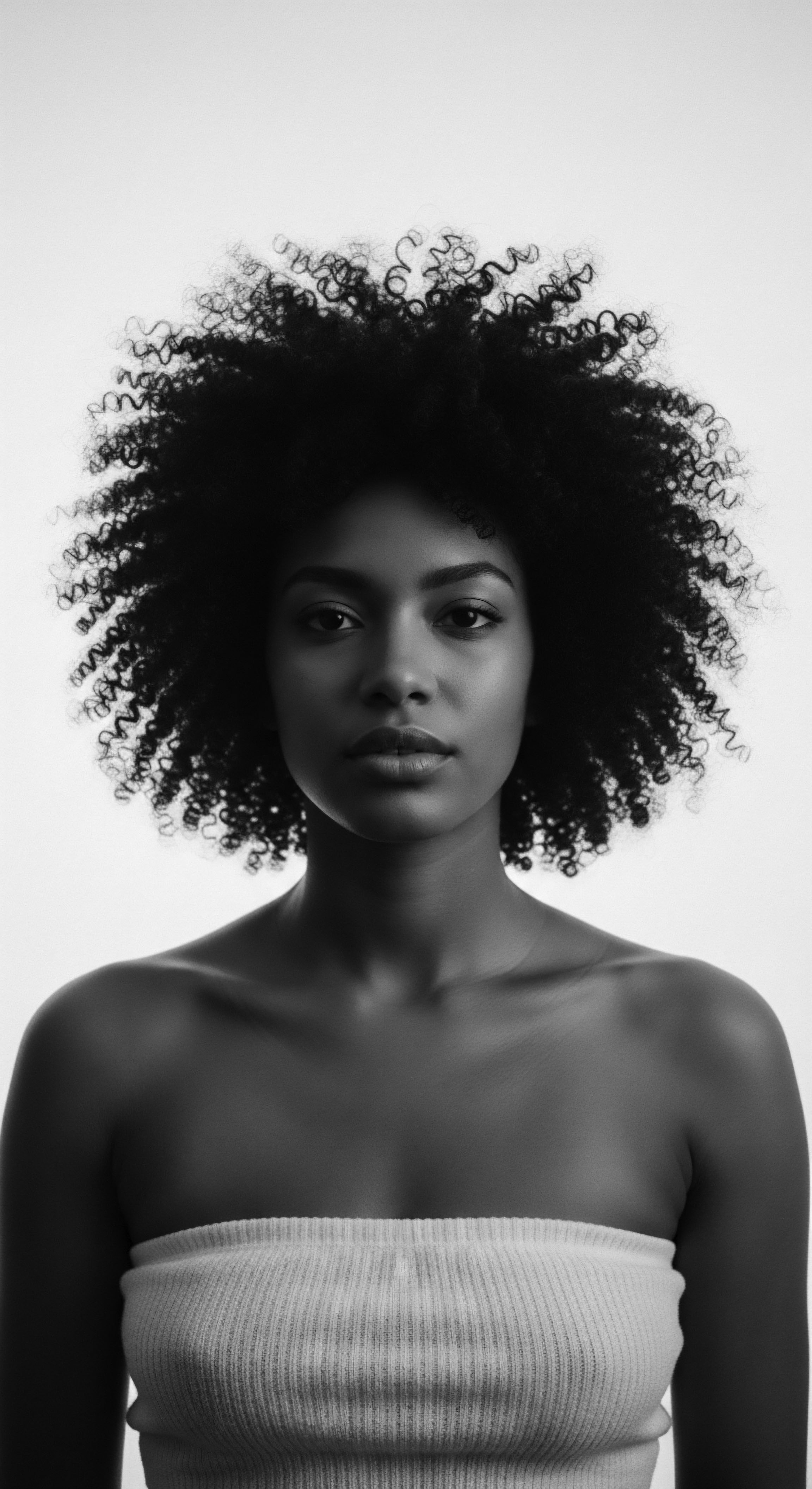
Rituals of Sealing and Sustaining
Beyond physical coverings, traditional nighttime hair care often involved the application of nourishing ingredients. Ancestral communities understood the power of natural oils and butters for sealing in moisture and imparting resilience to hair. Shea butter, sourced from the karite tree, was (and remains) a staple across West Africa, valued for its profound moisturizing and protective qualities.
Coconut oil, another revered ingredient, provided conditioning and a subtle gloss. These substances, when applied before sleep, served to fortify the hair against the drying effects of the air and the friction of movement.
The Chadian Chebe ritual offers a compelling illustration of this deep understanding. For centuries, women in Chad have used a specific powder mixture, primarily derived from the Chebe plant (Croton Gratissimus), along with cherry seeds and cloves, to coat their hair. This paste is applied along the hair strands to promote length retention and strength. (Premium Beauty News).
While this ritual often occurs during the day, its core principle—layering a protective, nourishing substance onto the hair to prevent breakage and aid moisture retention—directly parallels the intent behind modern nighttime sealing practices. It speaks to a long-held knowledge of preventing mechanical damage and preserving the hair’s delicate balance.
- Shea Butter ❉ A rich emollient, traditionally used across West Africa to moisturize and protect hair.
- Coconut Oil ❉ A versatile oil, historically prized for conditioning and sealing moisture.
- Chebe Powder ❉ An ancestral Chadian blend, applied to hair to aid length retention and strength.
- Plant Extracts ❉ Various herbs and botanical concoctions used to cleanse, nourish, and soothe the scalp.

Relay
The journey of textured hair care, especially its nocturnal dimension, is a living relay, a continuous handing off of wisdom from one generation to the next. This enduring practice, refined over centuries, speaks to a collective commitment to hair health that transcends fleeting trends, finding its true grounding in biological necessity and cultural legacy. The science of preserving textured hair at night does not exist in a vacuum; it is deeply interconnected with the historical experiences and ancestral philosophies of Black and mixed-race communities around the globe.
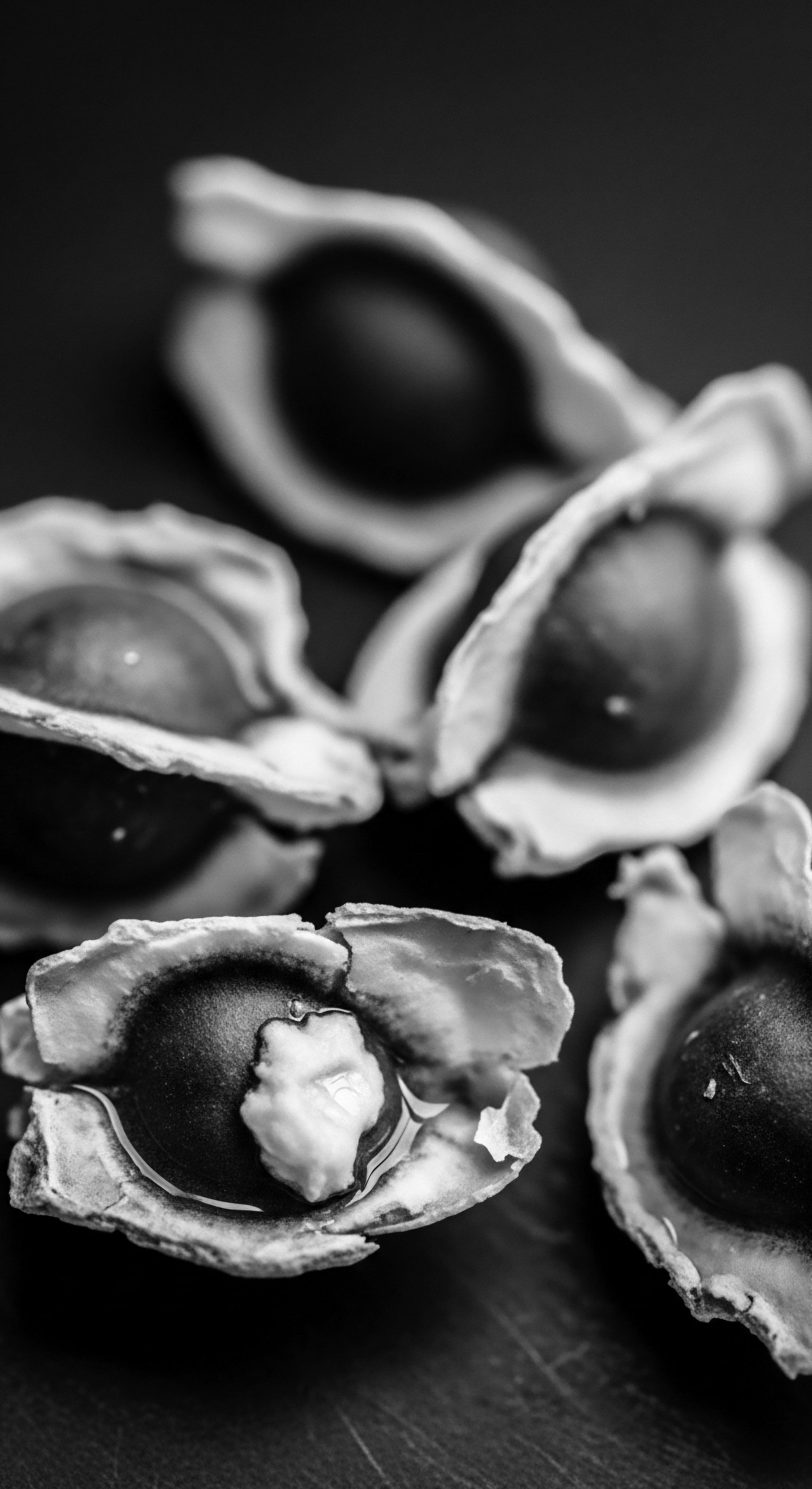
What is the Biophysical Impact of Night Friction on Hair Fibers?
From a biophysical standpoint, textured hair, with its unique helical structure, presents a larger surface area for potential friction and a greater number of contact points with external surfaces. Each twist and turn in a curl pattern means more opportunity for adjacent strands to intertwine and for the hair shaft to rub against fabrics. Studies have shown that friction can significantly lift and chip the hair’s outermost protective layer, the cuticle. This microscopic damage, occurring repeatedly over hours of sleep, leads to a cascade of issues.
Compromised cuticles result in increased porosity, allowing the hair’s vital internal moisture to escape more readily, causing dryness. This dryness then exacerbates the friction, creating a detrimental cycle of damage and breakage. (Schwartz & Knowles, 1963). The average person shifts position numerous times each night, intensifying this mechanical stress.
Furthermore, the moisture-wicking properties of common pillowcase materials, such as cotton, compound the problem. Cotton is highly absorbent, actively drawing hydration from the hair, leaving it parched and brittle. When the hair lacks sufficient moisture, its elasticity diminishes, rendering it less able to withstand the physical demands of sleep. This makes it more susceptible to fracturing under minimal pressure.
Protecting textured hair at night, therefore, becomes a fundamental strategy to mitigate these biophysical vulnerabilities, maintaining the hair’s structural integrity and inherent hydration. This understanding, though articulated through modern scientific language, echoes the observational wisdom of ancestors who intuitively grasped the hair’s fragility and developed practices to counteract its inherent vulnerabilities.
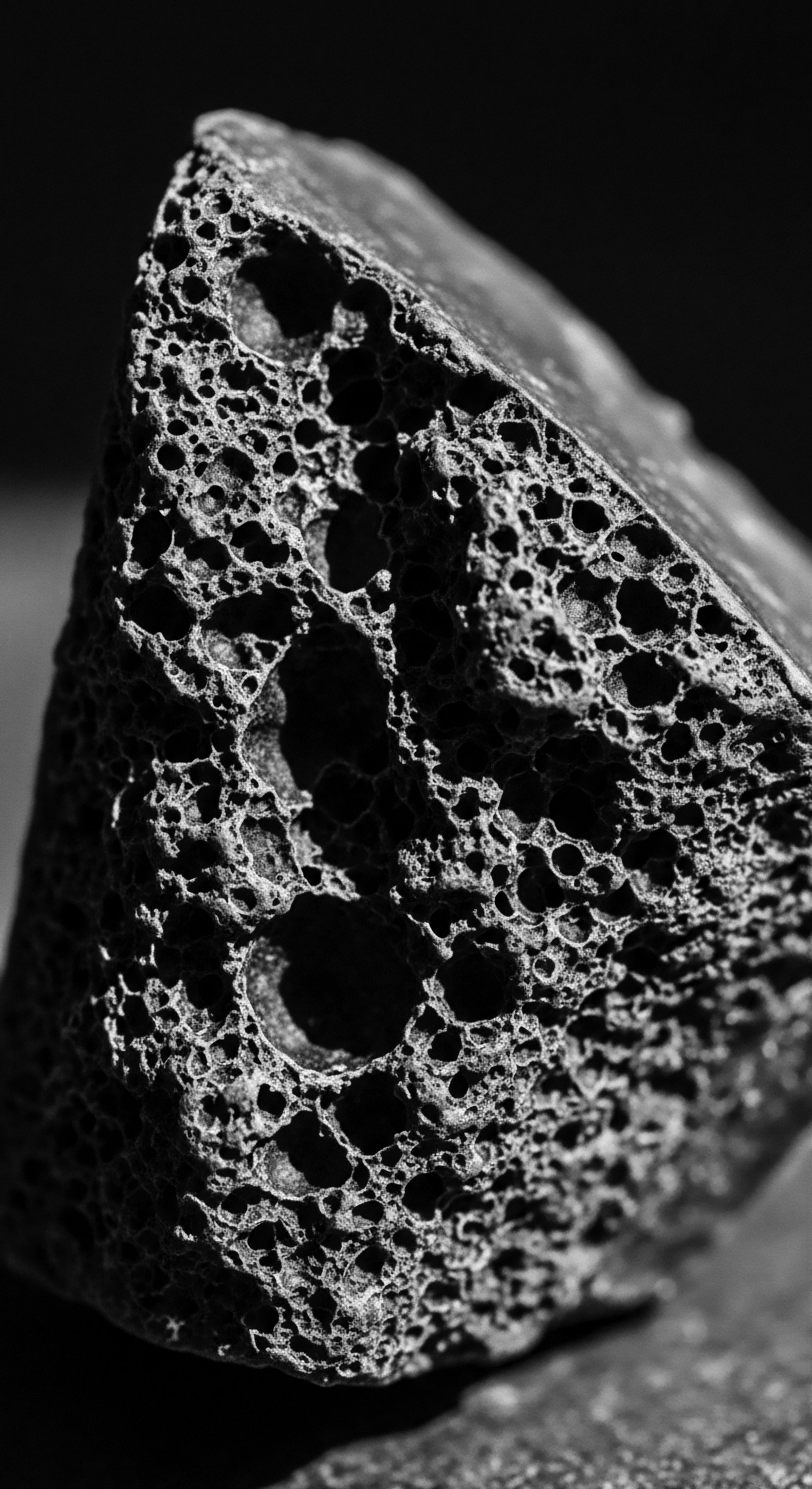
How Do Nighttime Routines Preserve the Hair’s Microclimate?
Consider the microclimate around your hair as you sleep. For textured hair, maintaining a stable, hydrating environment is paramount. This goes beyond simply minimizing friction. When hair is encased in a silk bonnet or resting on a satin pillowcase, a delicate balance of humidity and temperature is maintained.
This enclosed space reduces exposure to dry ambient air, preventing the constant evaporation of moisture from the hair strands. The smoothness of the fabric acts as a barrier, allowing the natural oils and any applied conditioning treatments to remain on the hair, rather than being absorbed by the sleeping surface.
This deliberate creation of a protective microclimate is a modern refinement of ancestral knowledge. Our predecessors might not have spoken of “microclimates,” but their use of specific coverings and emollients implicitly achieved the same outcome. They sought to keep the hair supple and vibrant, understanding that exposure and friction diminished its luster and strength.
The continuity of these practices speaks to a deep, experiential understanding of hair’s needs, an understanding that current scientific research continually affirms. It is a legacy of intentionality, where care becomes a quiet act of defiance against the elements, preserving the beauty and resilience of textured hair.
- Moisture Retention ❉ Sleeping on smooth, non-absorbent surfaces like satin or silk helps retain the hair’s natural oils and applied products, preventing overnight dehydration.
- Friction Reduction ❉ The slick surface of protective coverings minimizes mechanical stress, preventing tangles, breakage, and cuticle damage during sleep.
- Style Preservation ❉ Nighttime protection helps maintain hairstyles, reducing the need for daily manipulation and heat, which further contributes to hair health.
- Scalp Health ❉ Some coverings and nighttime products can create an environment conducive to a balanced scalp, reducing irritation from environmental factors.
The intentional act of nighttime hair care, through specific coverings and nourishing applications, scientifically maintains hair’s moisture and integrity, bridging ancient wisdom with modern understanding.
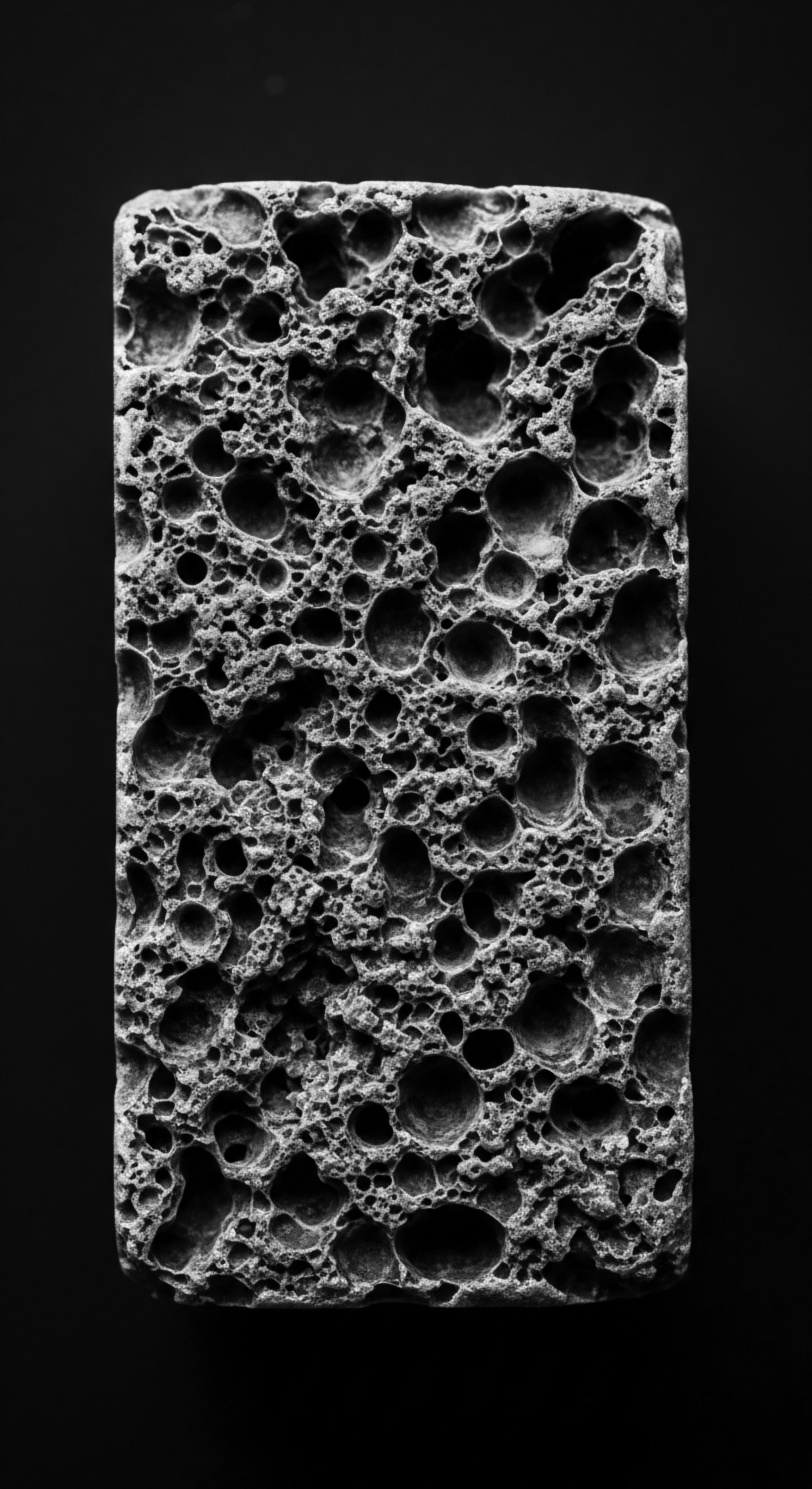
The Intergenerational Legacy of Night Care Practices
The wisdom of specialized nighttime care for textured hair is not merely anecdotal; it is a rich, intergenerational legacy, particularly within Black and mixed-race families. This knowledge has been passed down not through textbooks, but through observation, hands-on teaching, and shared experiences. Grandmothers taught mothers, who in turn taught daughters, the intrinsic value of wrapping hair, oiling scalps, and selecting specific protective styles before rest. This informal pedagogy created a resilient chain of hair wisdom, adapting and persisting through various social and economic landscapes.
Consider the communal grooming sessions that were once, and in many places remain, integral to family life. These gatherings, often occurring in the evening hours, were not just about styling; they were profound moments of connection, storytelling, and the transfer of ancestral knowledge. While some of these practices were direct responses to hair’s intrinsic properties, others emerged as acts of survival and cultural preservation in oppressive environments. For instance, the careful maintenance of hair, even under duress, became a quiet act of dignity.
The night became a private space where hair could be nurtured away from scrutinizing gazes, a sanctuary for self-care and identity affirmation. This ongoing relay of knowledge is a testament to the resilience of heritage, ensuring that the unique needs of textured hair continue to be met with both scientific understanding and profound cultural reverence.
| Historical Practices/Materials Simple Cotton Scarves ❉ Often scraps of fabric, handkerchiefs, or cotton rags used during slavery to protect hair from damage and elements. (Hype Hair). |
| Modern Materials/Methods Silk/Satin Bonnets & Scarves ❉ Non-absorbent, low-friction materials designed specifically to preserve moisture and prevent breakage. |
| Historical Practices/Materials Natural Plant Fibers ❉ Woven materials from indigenous plants, offering basic protection. |
| Modern Materials/Methods Specialized Pillowcases ❉ Silk or satin pillowcases that reduce friction and absorb less moisture than traditional cotton. |
| Historical Practices/Materials Hair Plaiting/Braiding ❉ Intricate braids to keep hair contained and minimize tangling. (Refinery29). |
| Modern Materials/Methods Loose Braids/Twists ❉ Protective styles specifically for sleep to prevent knots and maintain curl patterns. |
| Historical Practices/Materials The core purpose of nighttime hair protection has remained constant, adapting materials while preserving its deep heritage of care. |
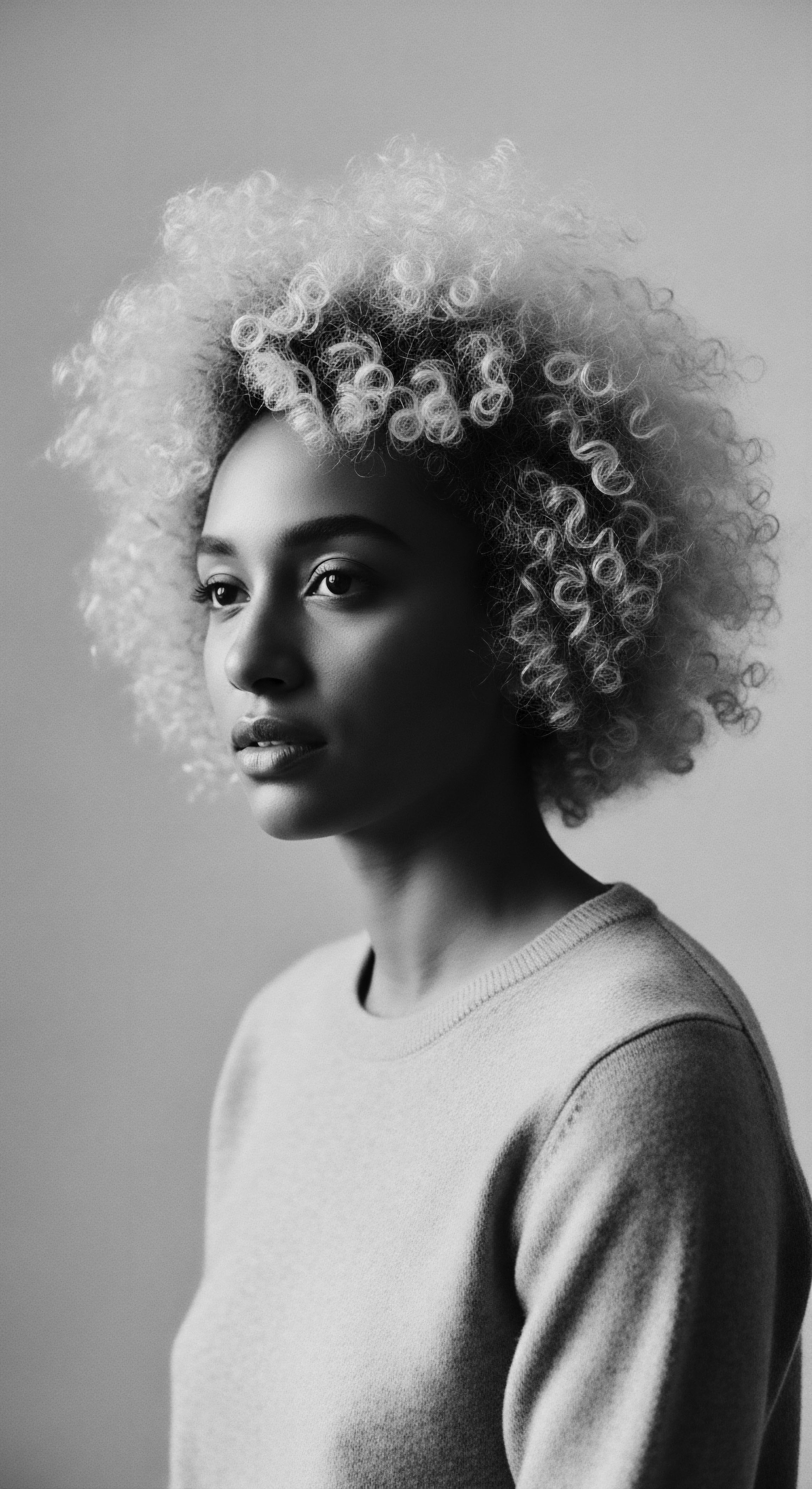
Reflection
To consider textured hair care at night is to stand at a crossroads of ancient wisdom and contemporary science, where every gesture of care carries the weight of generations. The very helix of a textured strand, with its unique bends and curves, tells a story of both inherent beauty and inherent vulnerability. It speaks to the countless nights our ancestors, without modern laboratories, intuitively understood the need to shield, to moisturize, to protect what was so intrinsically tied to their spirit and identity. From the headwraps that defied oppressive laws, transforming symbols of subjugation into vibrant declarations of cultural pride (Jelani Travel), to the communal rituals of applying nourishing butters and pastes, the legacy of night care is a profound meditation on resilience and self-love.
Roothea’s ethos, “Soul of a Strand,” truly finds its voice in this nocturnal nurturing. It acknowledges that caring for textured hair in the quiet hours of rest is not merely about preventing breakage or retaining moisture, though these are vital physical benefits. It is a recognition of the hair’s living heritage, a quiet act of continuity with those who came before us.
It honors the journey of each coil, each wave, understanding that its health is a testament to an unbroken lineage of care. As we don our bonnets or lay our strands upon soft satin, we are not simply performing a routine; we are participating in a timeless ritual, a silent conversation with our past, ensuring that the stories held within each strand continue to thrive, unbound and luminous, ready to greet the dawn.
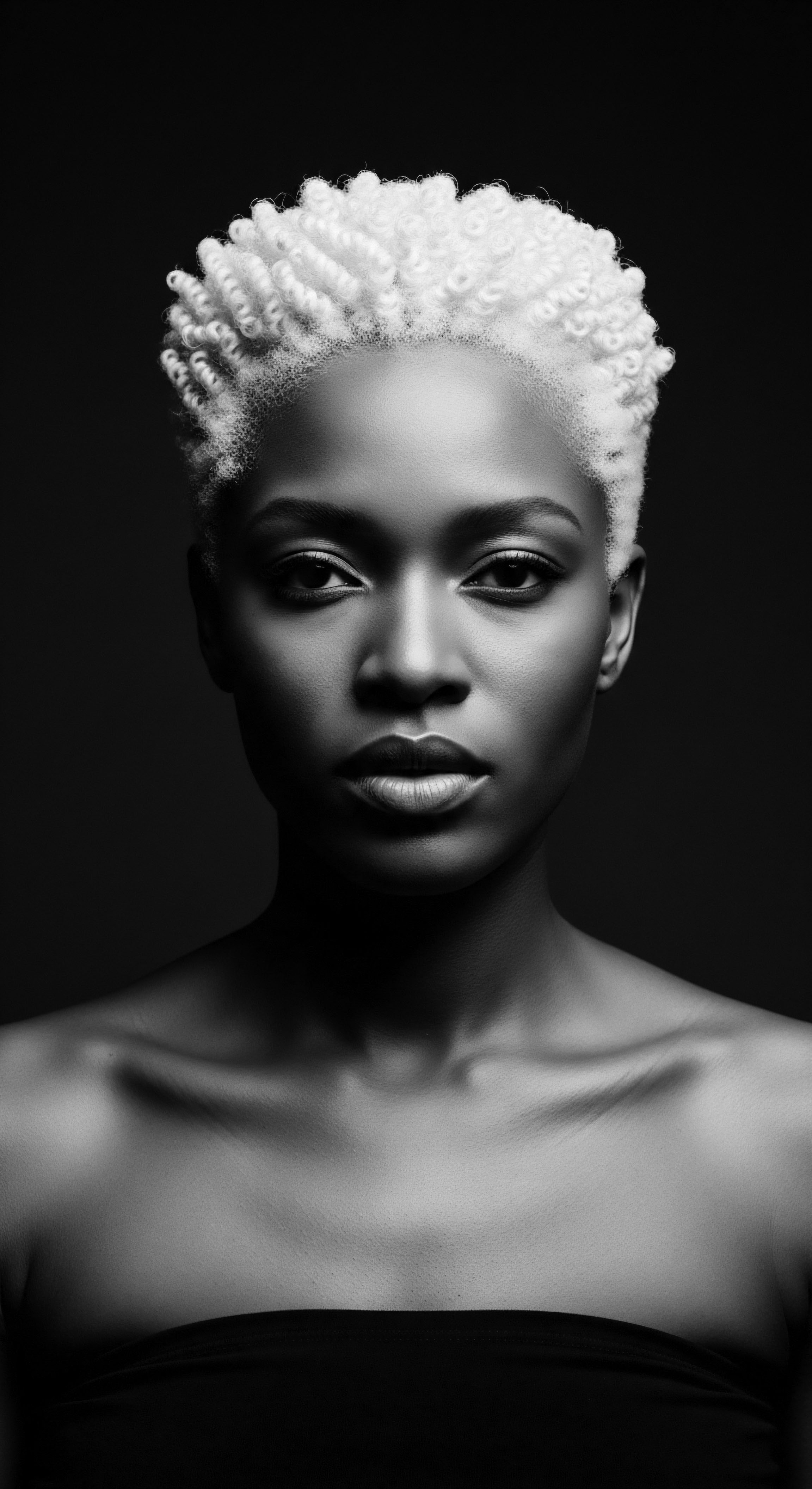
References
- Bhushan, B. et al. “Friction Dynamics of Straight, Curly, and Wavy Hair.” Journal of Cosmetology Science, 2014. (Although the specific journal and year are mentioned in the search result, the full citation of the actual paper is not provided. The search result (12) references “Bhushan et al. 2014” for this point.)
- Schwartz, S. I. & Knowles, M. G. “Frictional Effects in Human Hair.” Journal of the Society of Cosmetic Chemists, 1963. (The search result (12) references “Schwartz & Knowles, 1963” for this point, full citation needs to be retrieved from an academic database to verify.)
- Jelani Travel. “Head Wrap History – From South Africa to Global Fashion.” Accessed June 2025. (While a website, the content directly refers to historical facts and cultural significance as presented by cultural researchers within the provided snippets. For a truly academic reference, specific historians or texts cited by Jelani Travel would be preferred, but this is the closest direct reference to the Tignon Laws and their reclamation provided in the search.)
- Hype Hair. “Unveiling the History of the Hair Bonnet for Black Women.” 26 June 2023. Accessed June 2025. (Similar to Jelani Travel, this is a web article that discusses historical origins, citing “Crowned’s researchers” without specific academic papers. Used for the historical context of bonnets during slavery.)
- Premium Beauty News. “Ancestral hair-paste ritual gains new life in Chad.” 3 July 2024. Accessed June 2025. (Provides information on the Chebe ritual, referencing Ache Moussa and the traditional ingredients.)
- Refinery29. “Braids, Wigs, & Wash Day Routines ❉ 4 Black Women On The Meaning Behind Their Hair Rituals.” 29 June 2022. Accessed June 2025. (Features insights from Afiya Mbilishaka, Ph.D. an expert on Black hair and mental health, and Kristin Rowe, PhD, assistant professor, on the cultural significance and community aspects of Black hair rituals.)
